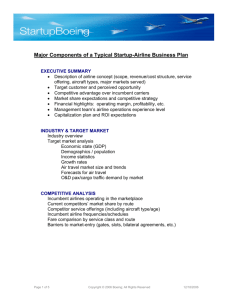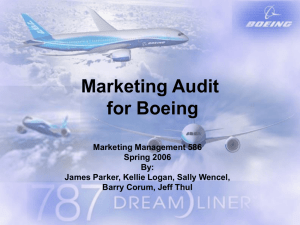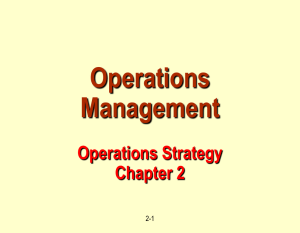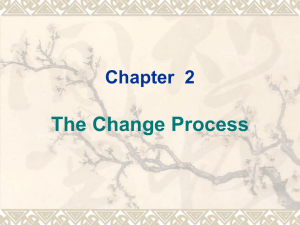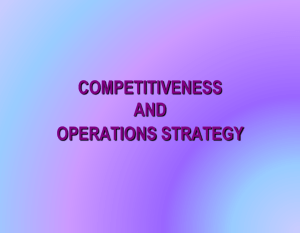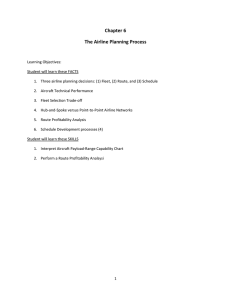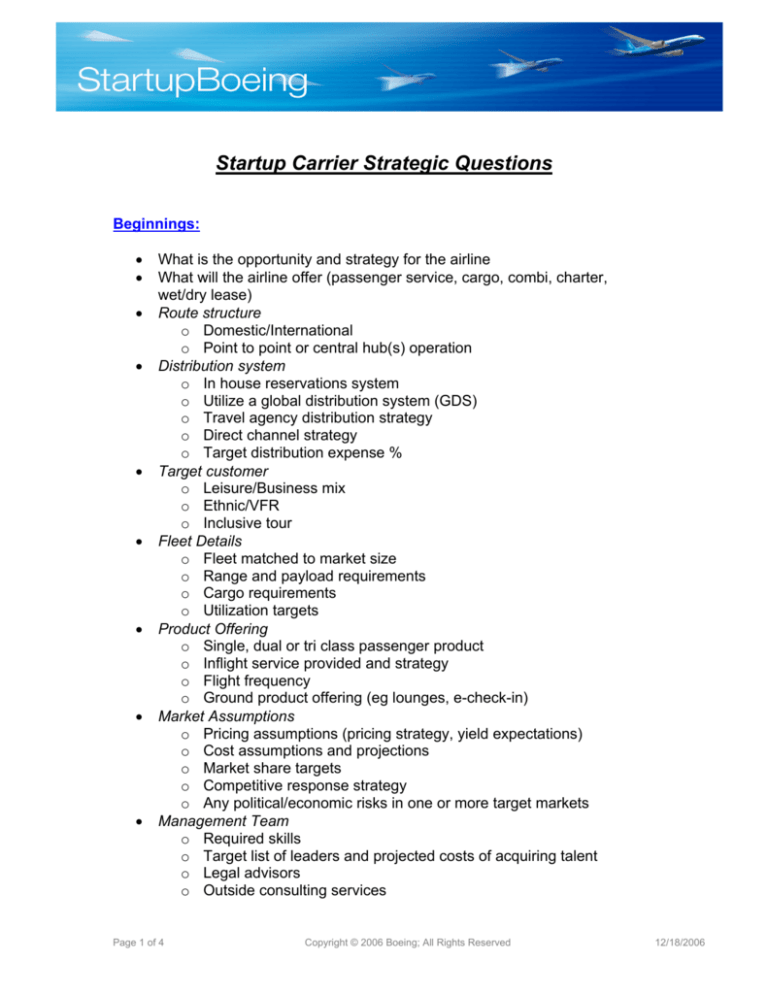
Startup Carrier Strategic Questions
Beginnings:
•
•
•
•
•
•
•
•
•
What is the opportunity and strategy for the airline
What will the airline offer (passenger service, cargo, combi, charter,
wet/dry lease)
Route structure
o Domestic/International
o Point to point or central hub(s) operation
Distribution system
o In house reservations system
o Utilize a global distribution system (GDS)
o Travel agency distribution strategy
o Direct channel strategy
o Target distribution expense %
Target customer
o Leisure/Business mix
o Ethnic/VFR
o Inclusive tour
Fleet Details
o Fleet matched to market size
o Range and payload requirements
o Cargo requirements
o Utilization targets
Product Offering
o Single, dual or tri class passenger product
o Inflight service provided and strategy
o Flight frequency
o Ground product offering (eg lounges, e-check-in)
Market Assumptions
o Pricing assumptions (pricing strategy, yield expectations)
o Cost assumptions and projections
o Market share targets
o Competitive response strategy
o Any political/economic risks in one or more target markets
Management Team
o Required skills
o Target list of leaders and projected costs of acquiring talent
o Legal advisors
o Outside consulting services
Page 1 of 4
Copyright © 2006 Boeing; All Rights Reserved
12/18/2006
•
Financial Assumptions
o 1,3 and 5 Year Forecast
o Initial cash requirements
o Investors
Strategic Targets
•
•
•
•
•
•
What is the estimated initial startup target date
Timeline/requirements for obtaining Airline Operating Certificate (AOC)
What is the capital plan? Plan for initial startup funds and ongoing growth
funds
What legal, regulatory or government issues might impede the launch?
Are any target destinations slot controlled or is an extensive route
authority process required
What is the growth strategy, how is it funded, is it flexible what financial
and human resources will be required to implement?
Marketing Plan
•
•
•
•
•
•
•
•
•
•
•
•
What does this airline uniquely deliver to the market?
What is the current competitive landscape?
Possible competitive response to our market entry and impact? What
would be strategic/tactical options and response?
Current fare environment by market and target fare level
Yield assumptions and minimums by route
Forecasted market stimulation by route under various scenarios
Product competitiveness and long term strategy
Frequent flyer program strategy or study risk of no FFP offering
Alliance or non-alliance strategy
Interline strategy
Advertising/Promotional plan and strategic plan
Sales team and sales plan
Fleet Plan
•
Does the fleet selection match with airline strategic plan?
o Type of aircraft (single or dual aisle)
o Number of aircraft
o Operating cost comparisons/requirements
o Performance requirements
o Passenger and cargo requirements
o Mission restrictions (eg short field, high altitude destinations)
Page 2 of 4
Copyright © 2006 Boeing; All Rights Reserved
12/18/2006
•
•
•
•
New versus used aircraft
o Age restrictions
o Cost comparisons
o Noise restrictions
Dry lease or wet lease or ACMI
Expansion/retirement strategy
Where will aircraft be registered?
Maintenance
•
•
•
•
•
Maintenance program and budget
Maintain in-house or outsource to third party
Spare part support
Heavy checks (airframe and engines)
Line maintenance
Financials
•
•
•
•
•
•
•
•
•
•
•
•
•
•
•
•
•
•
5 year actuals or pro formas by month
Pro formas at route level and consolidated results
Capitalization plan (including follow-on rounds for growth)
Proof of capital
Interest rates
Fuel rates and assumptions 1, 3 and 5 year forecast
Available cash for aircraft prepayments
Cash for ongoing aircraft costs
Operating cash
Financial ratio analysis
Sensitivity analysis for risk
Profit potential and durability
Projections until breakeven performance
Projections until reach positive cash flow
Startup implementation costs
Assumptions for major cost items on income statement (fuel, labor, a/c
ownership, rents, maintenance and distribution)
Credit card holdback assumptions
Cost control mechanisms
Page 3 of 4
Copyright © 2006 Boeing; All Rights Reserved
12/18/2006
Labor
•
•
•
Labor groups and total headcount target
Labor rates/scales by employee group
Organized labor plan
•
•
•
•
•
•
Pilot and Flight Attendant domiciles
Any labor outsourced (maintenance, flight crews, ground staff etc)
Recruitment plan (operations and management)
Any local restrictions on hiring non-resident labor
Incentive plan
Internal corporate culture plan- build a customer focused environment
Operating/Revenue Statistics
•
•
•
•
•
•
•
•
•
•
•
•
•
•
•
Projected load factor/breakeven load factor
Available Seat Miles/Kilometers
Revenue Passenger Miles/Kilometers
Revenue expectations and yield assumptions
Other revenue streams (onboard sales, freight, IFE, onboard advertising)
Revenue Management system internally managed or outsourced
Block hours
Unit revenue per ASM/ASK
Unit costs per ASM/ASK
Aircraft Utilization/Gate Utilization
Number of departures
Average stage length
Average passenger trip length
Yield statistics
Fuel statistics
Facilities
•
•
•
•
•
•
Number of unique stations (destinations)
Facility space requirements/restrictions (ticket counters, gates)
Ability to secure gates and commercially attractive slot times
Maintenance facilities, hangars
Base of operations and company headquarters
Ground handling in-house or outsourced
Page 4 of 4
Copyright © 2006 Boeing; All Rights Reserved
12/18/2006

